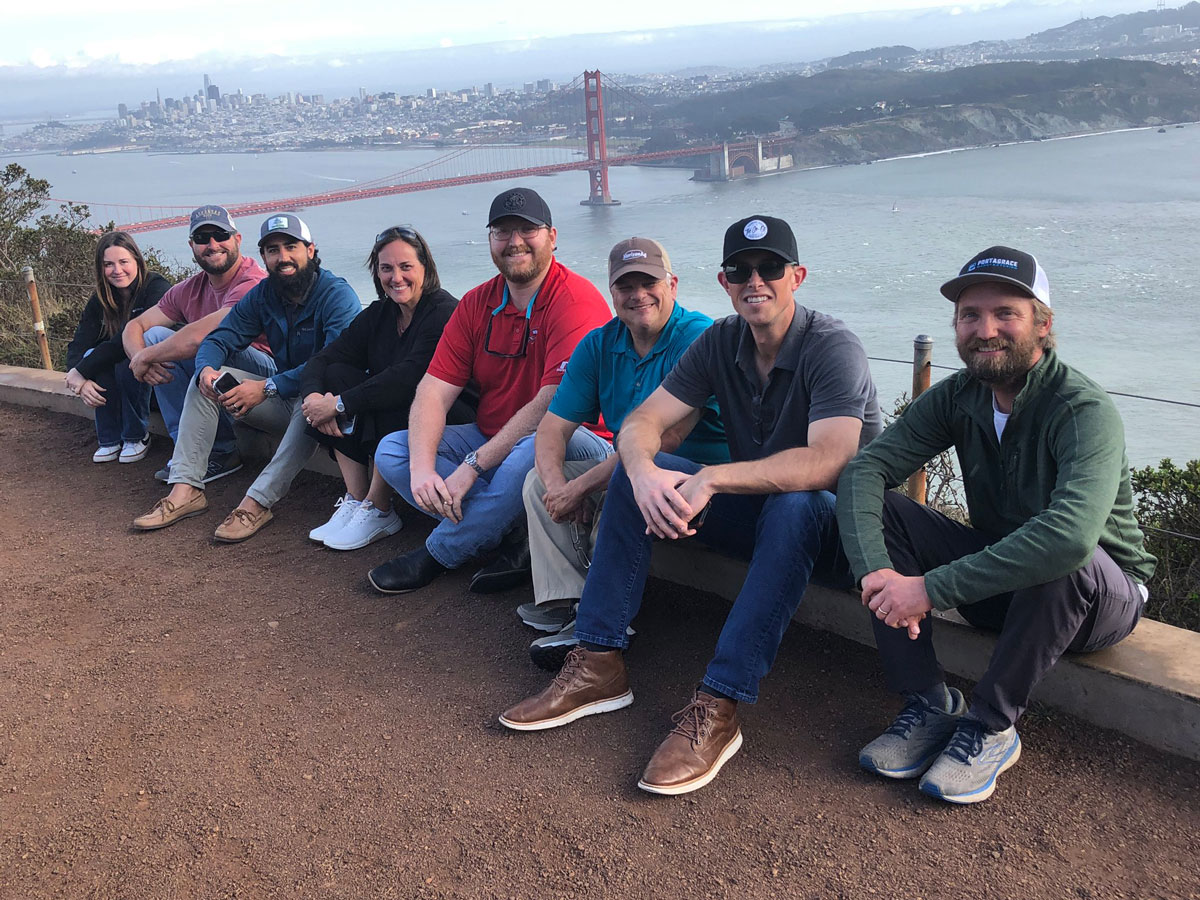 People in motion pause at the Golden Gate Bridge (from left): Mallory Scott, John McGraw, Daniel Cavazos, Julie Richard, Connor Popeck, Corey Conner, Adam McCalister, and Peter Rystrom
People in motion pause at the Golden Gate Bridge (from left): Mallory Scott, John McGraw, Daniel Cavazos, Julie Richard, Connor Popeck, Corey Conner, Adam McCalister, and Peter Rystrom
Nov 07, 2023
By John McGraw
John is a 5th-generation rice farmer from Star City, Arkansas.
SACRAMENTO, CA – Before going to see California agriculture for the first time, I had a lot of preconceived notions about stringent restrictions that limited the farmer’s ability to grow rice and constant legal battles between farmers and government. However, I was very surprised to be proven very wrong. California rice growers and California government work hand-in-hand, in what seems like a unique relationship, to secure the future of California rice, wildlife, and water. Instead of division and fighting regulations, the whole state is working together to best manage a unique industry – everyone is on the same team, working toward a common goal.
When told they could no longer burn rice fields, farmers there decided to change their production practices and began flooding fields after harvest to promote stalk decomposition. A byproduct of flooding fields was the attraction of a diverse collection of waterfowl who discovered a place to overwinter before migrating back north. A byproduct of creating waterfowl habitat was the realization of the importance of working ricelands in the state, and not just for agriculture. Now farmers and conservationists are going a step further and working to help juvenile salmon in the Sacramento Valley to thrive and put on weight in flooded rice fields, providing an abundant food source and a safe habitat from predators before they make their way to the ocean. It’s impressive to see how these collaborations have made rice farming a pivotal part of conservation in California.
Another common theme for the California session of the Leadership Class was quality. Farmer's Rice Cooperative, Sun Valley Rice, American Commodity Company, and the Rice Experiment Station at Biggs are all laser focused on the quality of California rice and looking at is as a food product instead of a commodity. Staff at the California Rice Commission explained the big picture of how it all comes together there, from regulatory programs to wildlife conservation to media today and telling agriculture’s story.
We met with local producers like Kim Gallagher, Josh Sheppard, and Leo LeGrande, and toured their farms where I got to see my first California bankout, a truly unique, self-propelled grain cart. At Montna Farms, I got to see another first, a flooded field being “stomped.” We also spent time in the “salad bowl of the world” in Salinas Valley with Mike Costa, a producer who has a 365-day farming season with diverse crops in two states, and deals with a myriad of issues including labor, irrigation, and weed infestation in his organic fields.
On our last day, we met Kent Wiley who hosted an experience every leadership class talks about: an aerial tour of the whole irrigation system in the Sacramento Valley, from Lake Shasta down through the Delta all the way to the Pacific Ocean. Our private plane flew over the Glenn-Colusa Pump Station that we had visited earlier in the week where fish screens promote the natural migration of the local salmon population. And the Orville Dam, where numerous improvements have been made after the dam came close to a catastrophic failure in 2017.
You could literally see why California is the number one agricultural producing state with wine, tomatoes, nuts, lettuce, and rice – California has it all. But that diversity comes at a price as producers there deal with challenges like wildfires and drought, not to mention the constant threat of loss of farmland to development. It seems like an endless battle but one California is taking on with resilience and out of the box thinking.